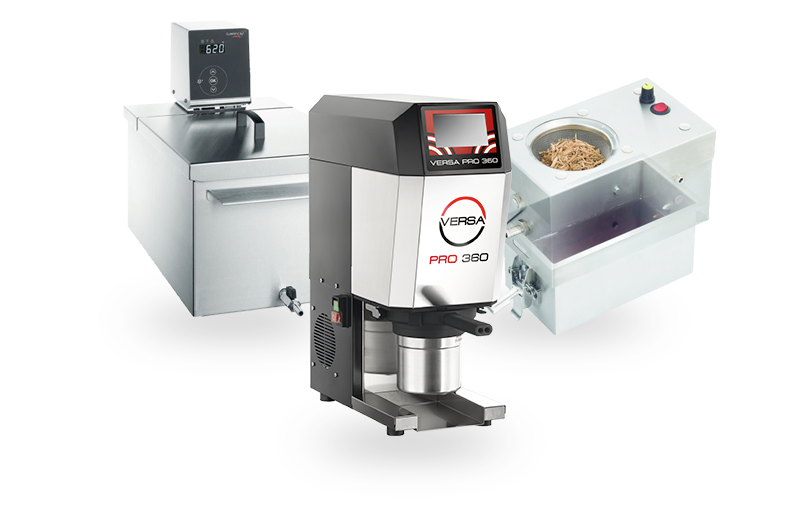Sous Vide Comparison Side-by-Side with Traditional Cooking (Methods)
Cooking Methods Compared
Most cooks are familiar with—and have based their menus around—traditional forms of cooking such as grilling, sautéing, boiling or steaming and baking or roasting but sous vide is quickly becoming a popular technique as well, due to its quality, precision and consistency which makes it perfect for commercial chefs and home cooks alike. Delving deeper, sous vide is the most revolutionary technique to enter the kitchen since the invention of the oven and range.
In essence, the sous vide method is simply vacuum sealing a product then cooking it in a low temperature water bath set to the temperature of the desired doneness (i.e. 133°F/56°C for medium rare). This preparation process helps to keep food flavorful, nutritious and perfectly cooked because you are able to cook precisely to your desired end-point rather than relying on intuition developed through years of practice, and more importantly, cooking at a lower temperature ensures the volatile organic compounds (VOCs) stay intact and at full potency. Since VOCs make up the flavor and aroma of what we taste and smell, it is easy to see why this would be a benefit of sous vide.
Immersion of the product in the heated water brings foods to the proper temperature for cooking throughout but no further; in fact, once removed from the immersion circulation cooker, the temperature of the food does not continue to climb as it does in other methods. This helps keep foods prepared using sous vide juicy, fresh and ready for finishing. The product can also be chilled (below 41°F in 6 hours) and re-thermed later. Once cooked (or before bagging) the ingredients can be seared, grilled or charred to add a desired texture and appearance.
Grilling – Grilling typically involves direct exposure to a flame or heat source. While it provides a flavorful char, it is easy to burn or overcook foods using this method alone and may result in the product’s natural moisture and fat being lost. Searing, on the other hand, is a great way to finish meats precisely prepared using sous vide to create the sort of crust that only exposure direct heat provides.
Sautéing/Pan Frying – Cooking foods in a pan with fat is also a great way to add texture, but results can be difficult to control and time correctly for readiness with other dishes. To achieve this goal typically requires years of practice in order to develop the muscle-memory needed to consistently deliver consistent results. The sous vide process requires vacuum sealing food with butter or oil and seasonings, which preserves juices and infuses them with flavor. It can also be used to hold dishes at a precise temperature or doneness until ready to finish and serve.
Steaming/Boiling – Theses methods can leach nutrients and flavor from foods due to the high heat and moisture content involved in the process. The difficulty of obtaining consistent temperatures also risks foods being overdone and texture being lost. A high-quality immersion cooker will provide precise temperature control while vacuum sealing keeps more nutrients and flavor in the foods being prepared by protecting them from air and water.
Bake/Roast – This method uses high temperature air to heat foods. The surrounding environment is often much hotter than the temperature desired for the ingredients to be done, relying on conduction to raise the foods internal temperature. This offers opportunity for foods to become overdone and dry. It is also difficult to control; foods may continue to cook even after being removed from the heat.
This process is akin to target shooting; a novice shooter will have trouble consistently hitting the bullseye because of the many factors that come into play with a bullet’s trajectory; however, when the rifle is put on a tripod, scoped and laser-sighted consistently hitting the target is easy and repeatable. Sous vide cooking offers the same advantages for reaching a product’s desired doneness. Retaining moisture with conventional means is also tricky. Traditionally, to prevent dryness and a poor mouth feel, foods should be basted in fats or juices when roasting, baking or grilling. In contrast, sous vide can provide exact temperatures and precise control along with vacuum sealing to retain juices.
Sous Vide for a Simple Solution
Sous vide is also more convenient than many of these other methods, using low temperatures to cook foods enables the chef freedom to do other tasks. All chefs know there is no shortage of needs grasping at our time. Maybe even more beneficial is the fact that when chilled properly, vacuum sealed foods can also be safely stored for accurate meal timing or later preparation and serving.
A cookbook or course can instruct you on how to prepare your favorite recipes using this new technique and become familiar with it principles while the HACCP Solutions from fusionchef by Julabo can help assure your technique is compliant. Consider how sous vide stacks up against the techniques used in your favorite recipes then contact us to learn how our products can improve your results.

